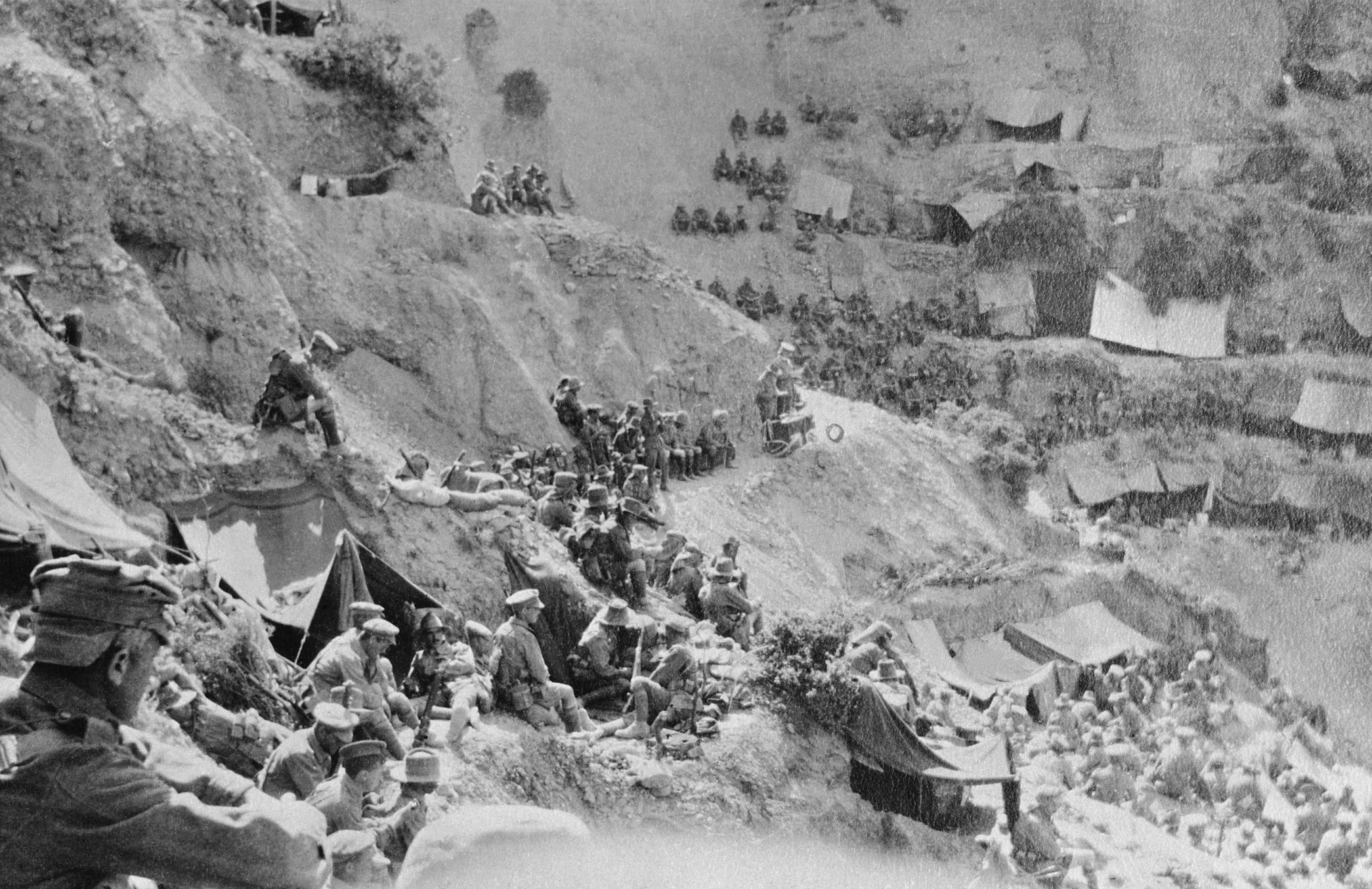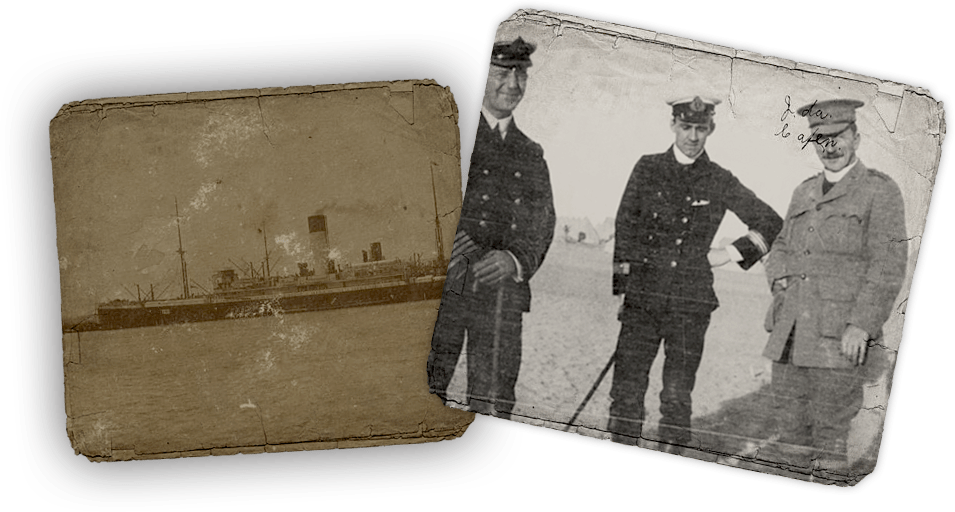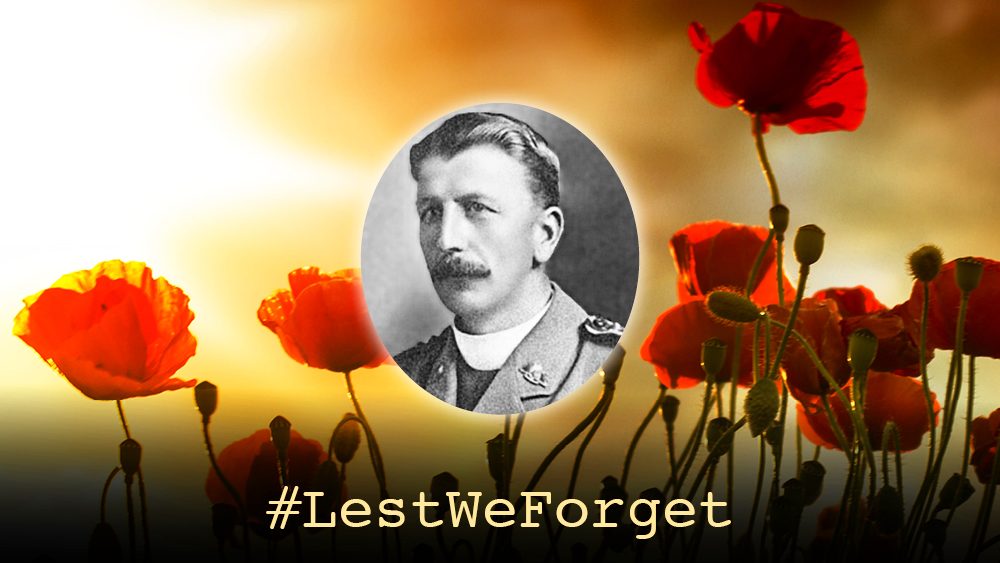Chaplain Andrew Gillison was praised in one soldier’s war diary as “the bravest man he ever knew.” Dearly loved by the Gallipoli soldiers for whom he gave his life, Gillison’s memorial still sits at Embarkation Pier, just north of Anzac Cove in Gallipoli.
Andrew Gillison was born in 1868 in Scotland where he became a Presbyterian minister, serving in several churches in Scotland and the USA before coming to work for the Presbyterian Church in Australia in 1903.
His church in Glasgow had been next door to the army barracks and he took a particular interest in ministry to soldiers. He became a part-time chaplain to the Australian Military Forces in 1906.
When war was declared in 1914, Gillison made the decision to enlist immediately.
When war was declared in 1914, Gillison made the decision to enlist immediately and was appointed Chaplain to the AIF in October the same year.
He was attached to the 14th Battalion, but as a chaplain, he had specific non-combatant tasks. In the field he would be a stretcher-bearer; on shipboard he helped in the hospital, visited men in detention and conducted regular church services.

Soldiers attending a church service in Reserve Gully in Gallipoli conducted by Chaplain Gillison Australian War Memorial
On April 25th, the 14th Battalion crossed the short distance to Gallipoli, anchoring at 4.00pm beside the ships which had landed the first wave earlier in the day.
Chaplains had been given strict instructions to remain on shipboard for several weeks until the situation was clearer. Most of the 14th Battalion were landed at 10.30am the next morning, April 26th. Chaplain Gillison managed to get ashore with them but was sent back. Gillison worked hard all day (as the ship was being utilised as a temporary hospital) assisting with the wounded and burying eight men at sea.
Chaplain Gillison conducted funerals under cover of darkness, beginning at 11.00pm and finishing when possible before first light.
There were far too many dead to ferry back to the ships and too many lonely wounded lying in pain and waiting further treatment. The officers knew the importance of funerals. No soldier wanted to go into danger thinking that they or their body would be abandoned.
The officers understood that the chaplains were needed to comfort the injured and that they also had a role in encouraging the soldiers. Gillison was allowed to go ashore the next morning, April 27, the second chaplain to do so. He was 47 years old.

Gillison was the second chaplain allowed to go ashore at Gallipoli
He immediately attached himself to the dressing station, the first place to which the casualties were brought, consoling the wounded and burying the dead. Chaplain Gillison conducted funerals under cover of darkness, beginning at 11.00pm and finishing when possible before first light.
“Stained by earth and the blood of fellow men, he was grandly eloquent, his clothes and appearance telling us what he did not.” – Corporal J.W. Barr
One soldier wrote in his diary that Gillison was the bravest man he ever knew and that “everyone praised his efforts to cheer the men under hardship and when wounded.”
Corporal J.W. Barr of the 2nd Field Ambulance wrote of Gillison, “Stained by earth and the blood of fellow men, he was grandly eloquent, his clothes and appearance telling us what he did not.”
“They spoke of Christian ministration while he supported the weakening frame from which the soul was speeding; a Christ-like devotion to his fellow-men that found him near them in their last moments.” Gillison was involved in the decision to agree to the armistice on 24th May 1915, proposed by the Turks, to bury the huge number of dead lying between the Turkish and ANZAC lines.
He carried the dead in and buried hundreds in shallow massed graves.
Gillison was one of those who went over to retrieve the dead. He wrote later in his diary: “Our dead were the result of the first day’s advance. I never beheld such a sickening sight in my life, and hope it may not be my lot again.” But he carried the dead in and buried hundreds in shallow massed graves.
Chaplain Gillison was preparing to read a burial service over yet more bodies when he heard groaning in the scrub above them on the ridge. The men crawled up to the top from where they could see a wounded soldier, covered in ants.
They crawled out to the wounded man and started to drag him back over the ridge. Suddenly they were in the sights of a Turkish sniper. Crawling backwards, a bullet hit Gillison in the shoulder and exited through his chest. He died in agony three hours later.
Chaplain Gillison’s body was laid out with ceremonial care. He was buried near the pier, a small cross marking his grave. This was not enough for the men of the 14th Battalion who did not want his final resting place to be lost or forgotten and they erected a more lasting memorial. When they finally left on December 18, they filed past his grave as they walked onto the pier. His memorial still sits at the head of Embarkation Pier today.
Email This Story
Why not send this to a friend?


